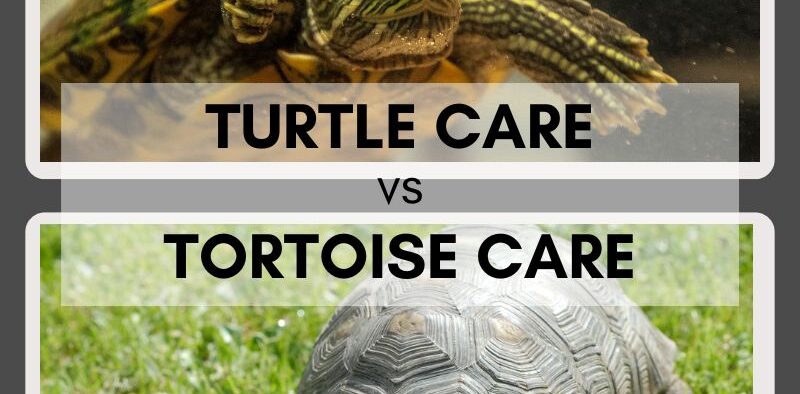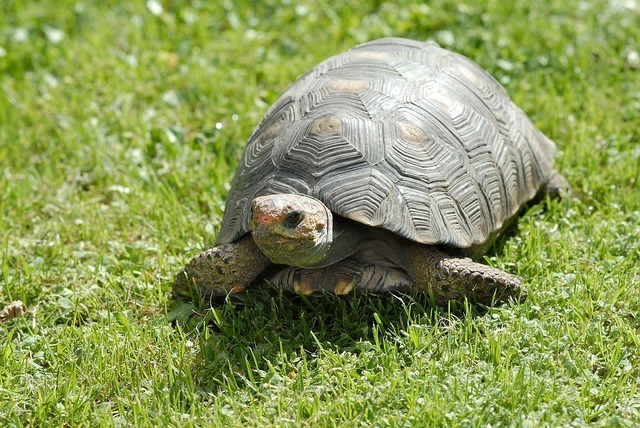Turtle Care vs. Tortoise Care
Share

Ever dreamt of having a pet dinosaur? Well, turtles and tortoises come pretty darn close! These captivating creatures have been roaming the Earth for millions of years, and with proper care, they can become cherished companions for decades. But turtle care is very different than tortoise care. Both have distinct needs and requirents to stay healthy! For example, turtles love to spend their days paddling in a mini-moat, while tortoises prefer the luxurious life on solid ground.
Don’t worry, we’ve got you covered on both fronts. So, grab your magnifying glass (figuratively, of course!), because we’re about to embark on a thrilling expedition into the world of shelled wonders – turtles and tortoises.
Feeding Turtles and Tortoises
When it comes to choosing food for your turtles or tortoises, go to the place they understand them. Personally, we prefer ZooMed as our go-to experts. But, there are lots of other manufacturers out there who know just as much!
Habitats for Turtle and Tortoises
Creating a comfortable and enriching environment is crucial for your turtle or tortoise’s well-being. Here’s a breakdown of their preferred living spaces:
- Turtles: Turtles, being natural-born swimmers, require an aquarium to feel at home. The minimum size for an adult turtle should be at least 29 gallons, offering ample space for swimming and maneuvering. Remember, turtles are also air breathers, so a screened top is essential to allow them to access air and bask comfortably.
- Tortoises: Tortoises, on the other hand, are land dwellers who crave space to roam and explore. To accommodate their terrestrial lifestyle, a terrarium is the ideal habitat. Again, size matters here. As a general rule, the terrarium should be at least 40 gallons for an adult tortoise, allowing them ample room to exercise and express their natural behaviors.

Light for Turtles and Tortoises are Pretty Similar
Just like us, both turtles and tortoises require a regular light cycle to maintain their health and well-being. In their natural habitats, both turtles and tortoises experience a cycle of day and night. Mimic this cycle by providing them with around 12 hours of “daylight” daily. This can be achieved with a regular fluorescent bulb or LED light. Both need 12 hours of “daylight” daily but avoid direct sunlight in their enclosure.
While sunlight is essential for their overall health, avoid letting direct sunlight penetrate their entire enclosure. Direct sunlight can cause overheating, so provide basking areas with UVB lighting instead.
Install a UVA/UVB bulb within their enclosure. These specialized bulbs emit ultraviolet rays that are crucial for helping your turtle or tortoise absorb calcium and develop healthy bones and shells. Consult a veterinarian or refer to care guides specific to your species to determine the appropriate wattage and type of UVB bulb for your pet.
Temperatures Vary
Maintaining the proper temperature range is vital for both turtles and tortoises to regulate their body temperature, a process crucial for their overall health. Let’s explore how to create a thermal paradise for your reptilian companion:
Turtles prefer warm temps
Since turtles spend time both in and out of water, their enclosure needs to provide a temperature gradient. Aim for a warm side of 90-95°F, achieved using a heat lamp. Provide a cooler side of 75-85°F for them to retreat to and regulate their temperature. At night, the entire enclosure can drop to 70-75°F. Don’t forget about the water! It also needs heating, which can be achieved with an overhead lamp, underwater heater, or under-tank heater.
- Warm side: 90-95°F (heated with a heat lamp)
- Cool side: 75-85°F (nighttime: 70-75°F)
- Water: Needs heating as well (overhead lamp, underwater heater, or under-tank heater).
Tortoises prefer even warmer temps!
Tortoises, being land dwellers, have similar temperature requirements. Create a warm basking area of 95-100°F using a heat lamp. The cooler side of their enclosure can range from 70-85°F, providing a space to escape the heat. Nighttime temperatures can drop a bit cooler for tortoises, ideally between 60-70°F. A similar temperature gradient needed in the terrarium.
- Warm side: 95-100°F (heated with a heat lamp)
- Cool side: 70-85°F (nighttime: 60-70°F)
Water Needs…
Turtles and tortoises, though both sporting impressive shells, have vastly different lifestyles. This difference translates directly to their water needs. Let’s dive in (or, perhaps, stay on land) and explore why:
- Turtles: Turtles are at home in the water. Built for aquatic adventures, they spend a significant portion of their time swimming and diving. Their streamlined bodies and webbed feet propel them through the water, making clean water essential for their health and happiness. Need clean water for swimming. A strong filter (canister or power) is recommended, but adjust if the current is too strong for your turtle.
- Tortoises: In contrast, tortoises are true land dwellers. Their stocky builds and stumpy legs are more suited for munching on vegetation than maneuvering underwater. While they do require water to stay hydrated, a shallow dish for drinking and soaking is all they need. Provide a shallow dish of water for drinking and soaking.
Land Area
Both turtles and tortoises are cold-blooded creatures who rely on external heat sources to regulate their body temperature. But how they soak up the sun differs based on their preferred habitat.
- Turtles: Turtles, being aquatic creatures, enjoy basking out of the water. Replicate a beach-like environment with a designated basking area. You can create a “beach” using smooth gravel or provide a floating platform that allows them to climb out and dry off completely. A basking area is crucial! Create a “beach” with gravel or use a floating platform.
- Tortoises: Tortoises, on the other hand, strictly land-based, prefer a basking rock on the warm side of their enclosure. This allows them to absorb heat directly from the sun. However, don’t forget to offer a cool side retreat as well. This could be a platform with shade or a cave-like structure to help them regulate their temperature when needed. Provide a basking rock on the warm side for sunbathing. Offer a cool side hiding spot like a platform or cave.
Bedding for Turtles and Tortoises Vary According to Regions
Just like their water needs and basking preferences, the ideal substrate (the material that lines the bottom of their enclosure) for tortoises varies depending on their species and natural habitat. Here’s a glimpse into the fascinating world of tortoise toes…
Greek Tortoises
Greek tortoises hail from dry, arid regions. They’ll thrive on a substrate that mimics their natural environment. A mixture of sterile topsoil and calcium sand provides excellent drainage and allows for digging behaviors, a natural instinct for Greek tortoises.
Russian Tortoises
Russian tortoises and their Red-footed cousins come from grasslands and savannas. Coconut coir fiber or orchid bark closely resembles the natural materials they encounter in their wild homes. These substrates are excellent at retaining moisture, aiding with shedding, and encouraging burrowing, another natural behavior for these species.
This is just a brief overview. Remember, there are many other tortoise species, each with its own specific substrate needs. For the most up-to-date and specific information on your particular tortoise’s substrate preferences, consult a qualified veterinarian or a trusted resource like a PetSmart associate or care guides designed for your tortoise’s species.








